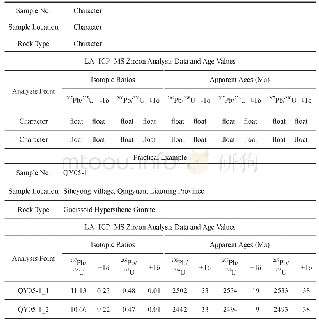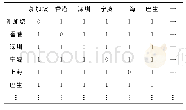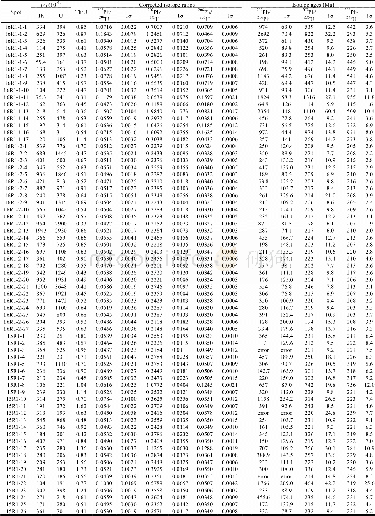《Table 4 Data structure of the zircon U–Pb isotopic dating data》
 提示:宽带有限、当前游客访问压缩模式
提示:宽带有限、当前游客访问压缩模式
本系列图表出处文件名:随高清版一同展现
《内蒙古北山哈珠地区晚古生代花岗岩类年代学与地球化学测试数据集》
As the Late Paleozoic granites in the Hazhu area of Beishan were all affected by magmatic thermal events in the later stage,therefore,reflected and transmitted light,and cathodoluminescence microscopy were carried out before zircon dating on polished zircon targets.The purpose is to select suitable zircon particles and mark the location of analysis points in order to prevent them from being located in the cracks of zircon or at the boundary of inclusions and therefore leading to meaningless zircon ages.The experimental process of LA-ICP-MS zircon U–Pb dating is detailed in Yuan HL et al.(2004).In the experiment,GJ–1 was used as the external zircon age standard and U–Pb isotope fractionation correction wasimplemented.The 206Pb/238U age of GJ–1 obtained by this test is 600.4±1.1 Ma,which is consistent with the 206Pb/238U age(600.4±1.1 Ma)obtained by Jackson SE et al.(2004).Thenormal Pb was corrected by the 208Pb correction method (Andersen T,2002),and the Pb,U and Th contents of zircon samples were calculated by using NIST612 glass reference materials as the external standard.The measured U–Pb data points basically fell on or near the Concordia curve.The zircon age measured in this dataset can be compared with the results of other scholars for the region (Pan ZL,2017;Yang FL et al.,2017;Zhao ZX et al.,2018).
| 图表编号 | XD00219947900 严禁用于非法目的 |
|---|---|
| 绘制时间 | 2020.06.01 |
| 作者 | 任邦方、段连峰、李敏、牛文超、任云伟 |
| 绘制单位 | 中国地质调查局天津地质调查中心、中国地质调查局天津地质调查中心、中国地质调查局天津地质调查中心、中国地质调查局天津地质调查中心、中国地质调查局天津地质调查中心 |
| 更多格式 | 高清、无水印(增值服务) |
查看“Table 4 Data structure of the zircon U–Pb isotopic dating data”的人还看了
-
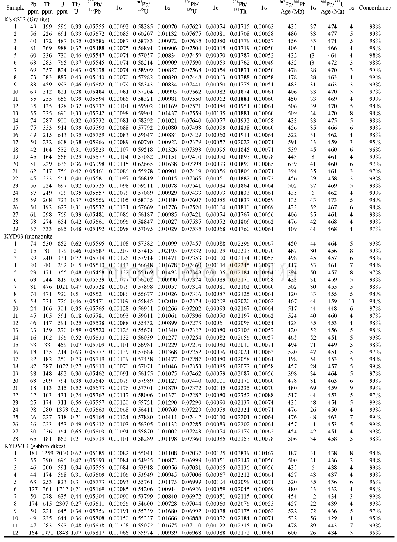
- Table 1 Zircon LA-ICPMS U–Pb data of Kashikashi and Kayedi plutons, and the gabbro dikes in the western Kunlun Orogen, N
-
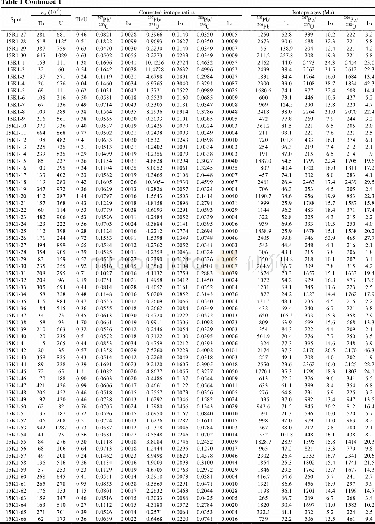
- Table 1 Zircon LA-ICP-MS U-Pb data of tuffie and conglomerate samples from the North Qiangtang depression, Tibet
